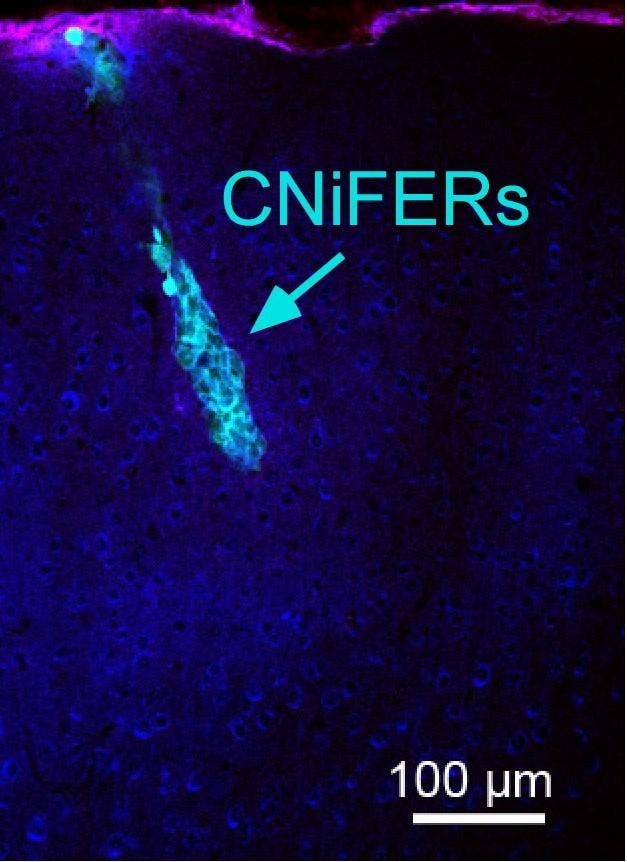Scientists managed to visualize the very formation of thoughts and addiction.

In a mouse brain, cell-based detectors called CNiFERs change their fluorescence when neurons release dopamine. Photo credits: Slesinger & Kleinfeld labs
A hundred years ago, the brilliant Russian physiologist Ivan Pavlov carried out what would become one of the most iconic experiments in science. Basically, before feeding his dogs, he would ring a bell. In time, the dogs associated the ringing of the bell with food and would get excited when they heard the bell ringing. Through a repeated procedure, he conditioned dogs to salivate at the ringing of a bell.
Now, we get to see that very process occurring in the brain. Ultimately, this could allow us to better understand learning, as well as addiction.
In order to study a neural system, you need some kind of stimulation, and then you need to record the effects of this stimulation in space and time. This is not an easy feat, and the team had to create a new type of biosensors.
“We developed cell-based detectors called CNiFERs that can be implanted in a mouse brain and sense the release of specific neurotransmitters in real time,” says Paul A. Slesinger, Ph.D., who used this tool to revisit Pavlov’s experiment. Neurotransmitters are the chemicals that transmit messages from one neuron to another.
CNiFERs are “cell-based neurotransmitter fluorescent engineered reporters.” They are the first biosensor which can reliably detect between the nearly identical neurotransmitters dopamine and norepinephrine. While the neurotransmitters are almost identical, distinguishing between them is huge, because they are associated respectively with pleasure and alertness — two very different states.
They were also able to measure and image another interesting process: the dopamine surge. Like Pavlov’s dogs, Slesinger’s mice were excited when they knew they were receiving food.
“We were able to measure the timing of dopamine surges during the learning process,” Slesinger says. “That’s when we could see the dopamine signal was measured initially right after the reward. Then after days of training, we started to detect dopamine after the tone but before the reward was presented.”
This kind of dopamine surge is also associated with addiction, and the technology might one be used to assess someone’s addiction to something. Ultimately, Slesinger says they’d like to use this sensing technique to directly measure these neuromodulators, which affect the rate of neuron firing, in real time.
The research was presented at a meeting of the American Chemical Society and was not yet published in a peer-reviewed journal.









